Burts Bees. Aspiring to be the Greenest Company on Earth. They have made a good start, apparently. The 2009 Corporate Responsibility Update of their "very first" 2008 report, attests to year on year increasing revenues since 2004 , growth from 400 to 480 employees , increased post consumer recycled product in packaging, lighter weight packaging, and reduced use of PVC, total electricity reduction by 21%, total water reduction of 20% , and a "net normalized reduction" of GHG's (normalized means factoring in sales growth ) of 33.5% versus base year which is 2006 (though actual total emissions versus 2006 were 5.7% higher in 2008) . Burt's Bees give preference to socially and environmentally conscious suppliers, spend 28% of purchasing costs in their home state of North Carolina, and 1.39% to minority or women's businesses. Burt's Bees employees contributed 6,006 hours of volunteer time in 2008 and 2009, and the Company donated cash of $295,500 to charitable purposes , and $600,000 of product . Burts Bees team members love their work (those who responded to the employee survey rated their job 4 on a 1-5 scale) and 30% of the Company's executives and senior managers are women. Burt's Bees employees have a great safety record and practice yoga as part of the Company's well being program. The Company is engaged with partners such as Habitat for Humanity and Teach America and a wide range of intiiatives for the benefit of the community.And relations with parent Company Clorox are quite hunky-dory. OK. So far so good. Many good initiatives from this sustainability spirited Company and clearly strong efforts to manage their impacts. Their decision to issue an update demonstrates a commitment to continued progress and a degree of transparency.
The question I kept asking myself as I read this report-update however was, where on earth are the bees? There is almost nothing about bees in this report. I expected to be totally blown away with bees. I thought I would read loads of hive-tales, pollen-stories, honeycomb legends, nectar anecdotes and, of couse, tributes to the Queen Bees. I hoped to learn about endangered bee species, colony collapse disorder (mentioned in the 2008 report),and hive restoration expeditions. I thought this report would be quite buzzing with bees. I thought we would be inspired with sustainability learnings from drones and colonies of honey bees. Burt's Bees has come a long way since its beginnings as a Company in 1989. I took a look at the products on their website. My eye caught the Mama Bee Belly Butter which is targeted at pregnant women with big bellies (though I suspect Chunkey Monkey regulars could benefit too, mentioning no names) but to my dismay, it is made from cocao butter though cera alba is listed in the ingredients list. Cerra alba ? Yes, you guessed it, Beeswax. I thought I might order some Baby Bee Bubble Bath containing vanilla exract (no chocolate chunks) but no cire d'abeille (Beeswax in the language of the tricolor). So I went to the Naturally Ageless Intensive Repairing Serum to smooth out all those wrinkles (especially now that I am appearing on 3BL TV), but again, bees extract gives way to pomegranate extract. So, I think Burt has some explaining to do. Is this a Company about bees or what ? Who stole the bees?
Anyway, bees or bust, this update is a nice chatty summary, even though there are many aspects which I found confusing. The time period covered is not clear - Fiscal Year or 2008 or 2009 or half'n'half? DIfferent dates and time periods are referenced and it is not always clear to me what relates to what. The data presented is not detailed and left me wondering in most cases about the basis for calculation. Whilst the trademarked Greater Good Burt's Bees Sustainability framework loooks graphically impressive, I cannot discern how it all hangs together in a clear strategy or workplan in each of the different dimensions. I lack a stated approach to strategy - goals, objectives, targets - presented in an orderly way. This report is a collection of snippets of good news, which is good news, I suppose, but I would have liked to have seen a more consistent buzz. I tend to think this review has been sort of force-fit into the form of a Sustainability Update, pieced together based on limited bits of information availabe. It includes an aspirational reference to the GRI (and a somewhat meaningless table of how the 2008 report (not the update) broadly aligns with the different sections of the GRI framework. It doesnt hang together all that well, despite evidence of continued progress. If the Company plans to introduce an update every interim year, I would find it easier to follow if conceptually it were a little sharper.
Anyway, its hard not to get stung by Burt's Bees, and to admire them for their contribution to the pollenation of sustainability. In the meantime, I will just bumble along back to my apiology-free corner, where life is positively buzzing.
elaine cohen is the joint CEO of BeyondBusiness, a leading reporting and social-environmental consulting firm. Visit our website at: www.b-yond.biz/en
Subscribe to:
Post Comments (Atom)






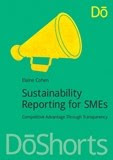
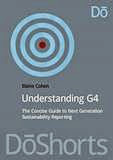
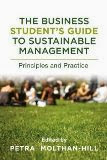
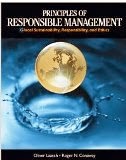
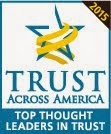









5 comments:
Interesting post. Burt Bees CEO IS John Replogle. He is from Unilever and Burt's Bees is now owned by Clorox, so I wonder what that implies. I found the report very "cosmetic" and the website very retail. The story about Burt had no real value for me. He was a character that created a good thing, but I don't know really if this company has any real purpose or empowers its employees take on CSR or Sustainability.
I use to feel about their bug spray the way you do about Chunky Monkey, but I could not find it on site as a product. So I'll have to resume my obsession to protect myself from tick bites with Avon's Skin So Soft. That stuff just keeps the ticks away and is a natural product I prefer to OFF bug spray.
Hi Elaine: I tweeted this yesterday, but you may not have seen it: http://bit.ly/cOIoEb
Mike.
They may not wish to speak about their bees and sourcing of bees wax because of the colony collapse issues in North America, and consequently their choice to source wax from Ethiopia - while this involves greenhouse gas issues, there a rationalisation has been made from the increased jobs, money, etc provided to impoverished communities.
Regardless of, or perhaps as a result of, this shift in sourcing this should provide an opportunity for Burt's Bees to explain their sourcing change decision, while also showing the value they are providing to communties in need.
Though it would also be fitting and interesting to know if they are investing in projects or research that address North American colony collapse issues.
Hi Lavinia, Mile and Wesley
thanks for reading and commenting. Lavinia- hope you stay free of ticks.
Mike - great post, thank you. Wesley - interesting perspective - and yes, you caught my point - I would have through the plight of bees should be rather a material issue for a company who is named after them and sources raw materials made from their output. Thanks for raising this point.
elaine
This in from twitter.
RT @nathanschock: Reading: Jeff Hollender: Greenwashing is getting worse @MarcGunther.com http://bit.ly/cD1b02
Jeffrey Hollender speaks to the fact that the core business of Clorox is bleach and that needs to be addressed. Clorox owns Burt's Bees.
It is amazing to watch how Hollender is showing up in Social Media so proactively right now by hiring Bill Breen, former Editor with Fast Company and Hollender's coauthor of The Responsibility Revolution and Nancy Baron, communications expert for climate.
This is one CEO that gets Social Media.
Post a Comment